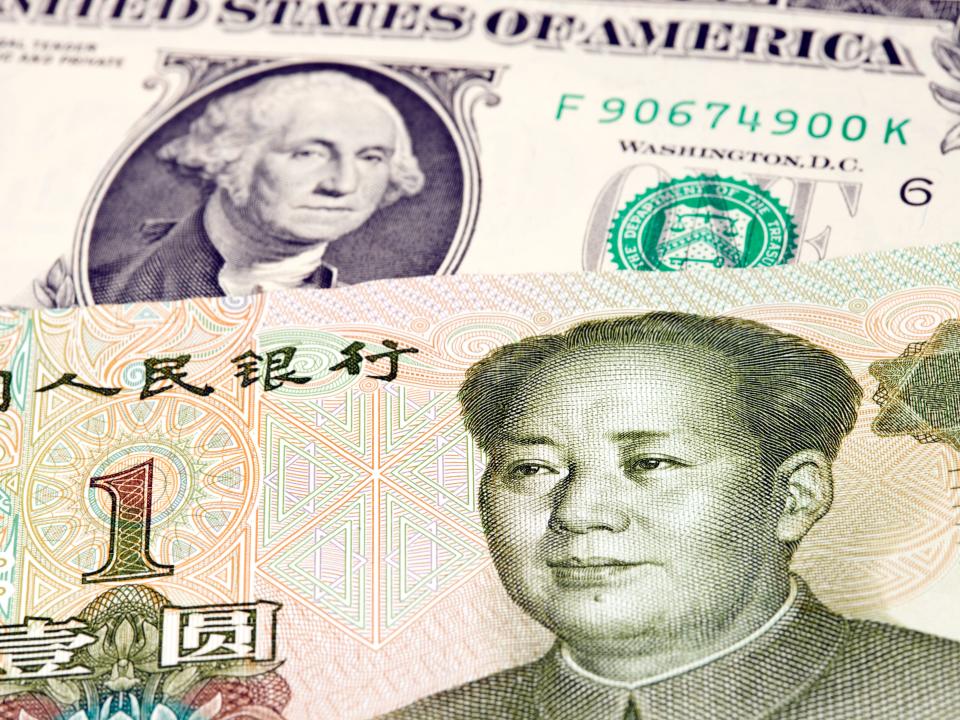The greenback is 'losing some influence' in the oil markets — and it means a partial de-dollarization is likely, says JPMorgan

The US dollar is losing some influence in the oil markets, according to JPMorgan.
The correlation between the USD's strength and oil prices has weakened, per the bank's research.
This is because more oil is now being transacted in non-dollar currencies.
Amid a broad discourse about the waning influence of the US dollar, analysts at one bank see one commodity market starting to shy away from the currency.
While analyzing the dollar's correlation to international crude prices, analysts at JPMorgan warned in a Thursday report that the greenback's importance could soon diminish.
"The US dollar, one of the key drivers of global oil prices, appears to be losing its once powerful influence," Natasha Kaneva, the head of global commodities strategy at JPMorgan, wrote in the report.
The analyst drew the conclusion by looking at the impact of a strengthening dollar on oil prices.
The relationship exists because the dollar is traditionally inversely correlated to oil prices — meaning that when the greenback's value rises, oil prices fall, and vice versa. The correlation exists because the international oil trade is typically denominated in the greenback, so demand for the commodity falls when the value of the dollar gains.
Between 2005 and 2013, a 1% rise in the US trade-weighted dollar — which measures the value of the greenback relative to a basket of other foreign currencies — would cut the price of international benchmark Brent crude oil by about 3%, according to data from JPMorgan.
However, Brent crude oil prices fell just 0.2%, with a 1% rise in the US trade-weighted dollar between 2014 and 2022 — pointing to the greenback's waning influence in the commodity's trade.
This trend is because more oil is now being transacted in non-dollar currencies, JPMorgan said in its report, such as the Chinese yuan.
Indeed, major energy buyer China has been using the yuan for almost all the Russian oil it bought over the past year, Reuters reported in May, citing multiple trading executives with direct knowledge of the matter.
Russian oil — now subject to international trade restrictions — is also being sold in the local currencies of the buyers or in the currencies of countries that Russia perceives as "friendly," Kaneva added in the report.
"Overall, we find that the importance of the dollar has declined significantly from 2014 to 2022," Jahangir Aziz, the bank's head of emerging market economics research, said in the report.
He said it's "hard to ignore" the shift, even if it is due to the dollar's strength post-pandemic and geopolitical tensions — such as the Western-led sanctions against Russia over its invasion of Ukraine that are making other countries wary of potential consequences of crossing Washington.
To be sure, the US dollar is still maintaining its dominance with its share of general usage via the SWIFT payment system at over 40% — much higher than the euro at around 25% and the yuan at around 3% in July 2023.
And while JPMorgan now expects "marginal de-dollarization," to take place, the pace is not expected to be rapid. This is because the dollar is just too widely used in a vast global financial ecosystem.
"Instead, partial de-dollarization — in which the renminbi assumes some of the current functions of the dollar among non-aligned countries and China's trading partners — is more plausible, especially against a backdrop of strategic competition," the bank's analysts added, referring to the Chinese currency by its official name.
It's not the first time the banking giant called the trend of de-dollarization.
In June, the bank's analysts said that "some signs of de-dollarization are emerging," as the dollar's share in foreign reserves fell to a record low. JPMorgan noted in its Thursday report that the dollar's share in foreign reserves volume has fallen to a record low of 58% in 2022 from 73% in 2001.
JPMorgan did not immediately respond to a request for comment from Insider sent outside regular business hours.
Read the original article on Business Insider
